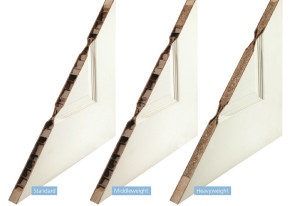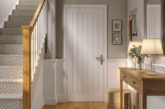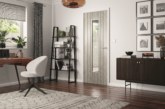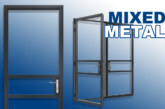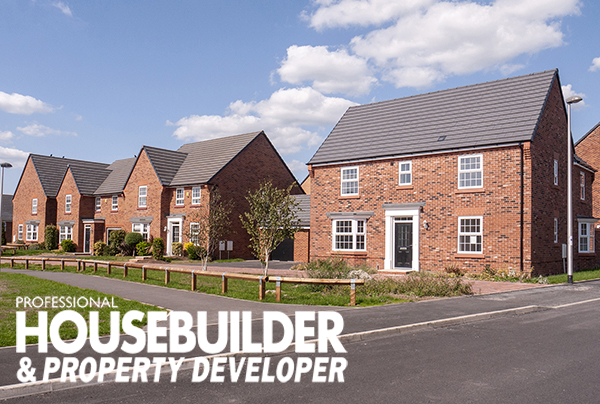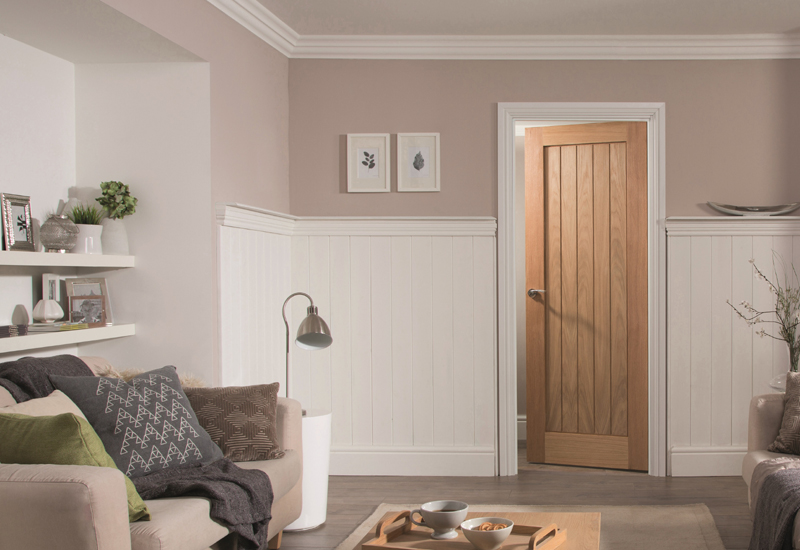
Internal timber doors are often specified purely on price and aesthetics, but taking a closer look at the core can make all the difference when it comes to meeting requirements relating to the wider room performance. Mike Ward, Managing Director at JELD-WEN explains the various timber door cores available.
It is understandable that cost typically dominates choice when it comes to internal doors, leading to them commonly been seen simply as a ‘gap filler’. However, as with almost every type of building product, failing to look any further than price and aesthetics can lead to ineffective performance which stops the room from meeting the full requirements of the end-user.
This can vary from creating a quiet and secure space, to a home office that demands privacy, or a conversion where fire regulations must be adhered to.
Light weight
A door with a standard or light weight core is currently the most typical choice for the majority of applications, mainly due to its cost effectiveness. At 35mm or 40mm thick, a door with a standard or light weight core is often a multi-cell or spacer pad which not only makes it light, but can undermine any additional acoustic measures that are being implemented within the rest of the room.
It is common to come across moulded panel doors with this type of core in new build properties across the UK. Where the housebuilder may specify these doors on cost alone, often the buyer will want greater protection against noise from adjoining rooms, and therefore upgrade to higher quality or denser cores at a later date. It’s therefore important for contractors to take a valuable learning from this; will the end-user expect or require a certain level of acoustics and if so, are the door cores being considered?
Plus, a door with a light weight core provides less resistance against impact and therefore damage. This is again often suitable for a standard domestic setting, but may increase the likelihood of maintenance or the need for replacement in the property is to be rented.
Middle weight
When it comes to doors with middle weight cores, on average 2kg is added to the overall weight of a 35mm or 40mm door. This not only improves the durability, acoustics, and insulation, but the general feeling of sturdiness and lasting quality. For example, these semi-solid cores provide a far greater surface area for a lock and latch fitting which results in a more secure and satisfying clunk on closure. The combined offering of quality, performance, and price, ultimately means that a middle weight core can provide the best of all worlds for a domestic application.
Heavy weight
Commonly 15kg heavier than their light weight core counterparts, a door with a solid or heavy weight internal construction gives a truly substantial feel. This is beneficial when working to a high specification and, when combined with high quality timber such as white oak, is ideal for meeting the expectations of a high-end show home or within new build properties that want to have a selection of ‘optional upgrades’. With this in mind, manufacturers such as JELD-WEN continue to extend the choice of oak door designs and offer everything from traditional styles to more contemporary looks such as the pictured Shaker Cottage oak door.
A heavy weight core of course also equals greater protection against damage or impact, plus a stronger base for the installation of door hardware. This makes it a more attractive proposition for areas of high traffic or where the door needs to be more than just functional; for instance, a communal entrance within a property that’s being developed for multiple occupants to share.
Acoustic benefits
Doors with heavy weight cores perhaps have the most to contribute to a room’s performance. One of the key benefits is the value it offers to acoustics. For a contractor, looking to comply with Approved Document E of the Building Regulations, which relates to the passage of sound, the contribution of the door has to be taken seriously.
Excellent acoustics can be of real value to the building occupant, particularly when used for a child’s bedrooms or for a laundry room, for example. Plus, they’re an important part of the housebuilder or architect’s responsibility to create a comfortable living environment that will stand the test of time. After all, being able to hear noisy neighbours or road traffic can be a detractor for buyers if managing or selling a property.
Fire doors
Fire doors also fall into the heavy weight core category. JELD-WEN offers 35mm, 44mm, and even 54mm thick fire doors options, which are approximately 45kg in comparison to the 12kg or 13kg of the light weight core design. In this case, the internal fire core would be part of the specification process as it’s so integral to the fire protection of properties. But again, the quality and acoustic properties that are innate with a door of this thickness should be seen as a huge added benefit.
Ultimately, timber doors can offer much more than a functional and indeed, an aesthetically pleasing, feature. Looking past purely price to take a closer look at the structure and performance of the door can reap benefits both for the occupant, who will use the door many times per day, and for landlords due to the reduced likelihood of maintenance call-outs or complaints.
We’re already seeing a number of UK housebuilders recognising the potential value that a heavier weight door core can offer to their customers due to the related quality and acoustic improvements; it is therefore time for property developers to follow suit through the wide range of options widely available from leading UK manufacturers.
Mike Ward is Managing Director at JELD-WEN. www.jeld-wen.co.uk

